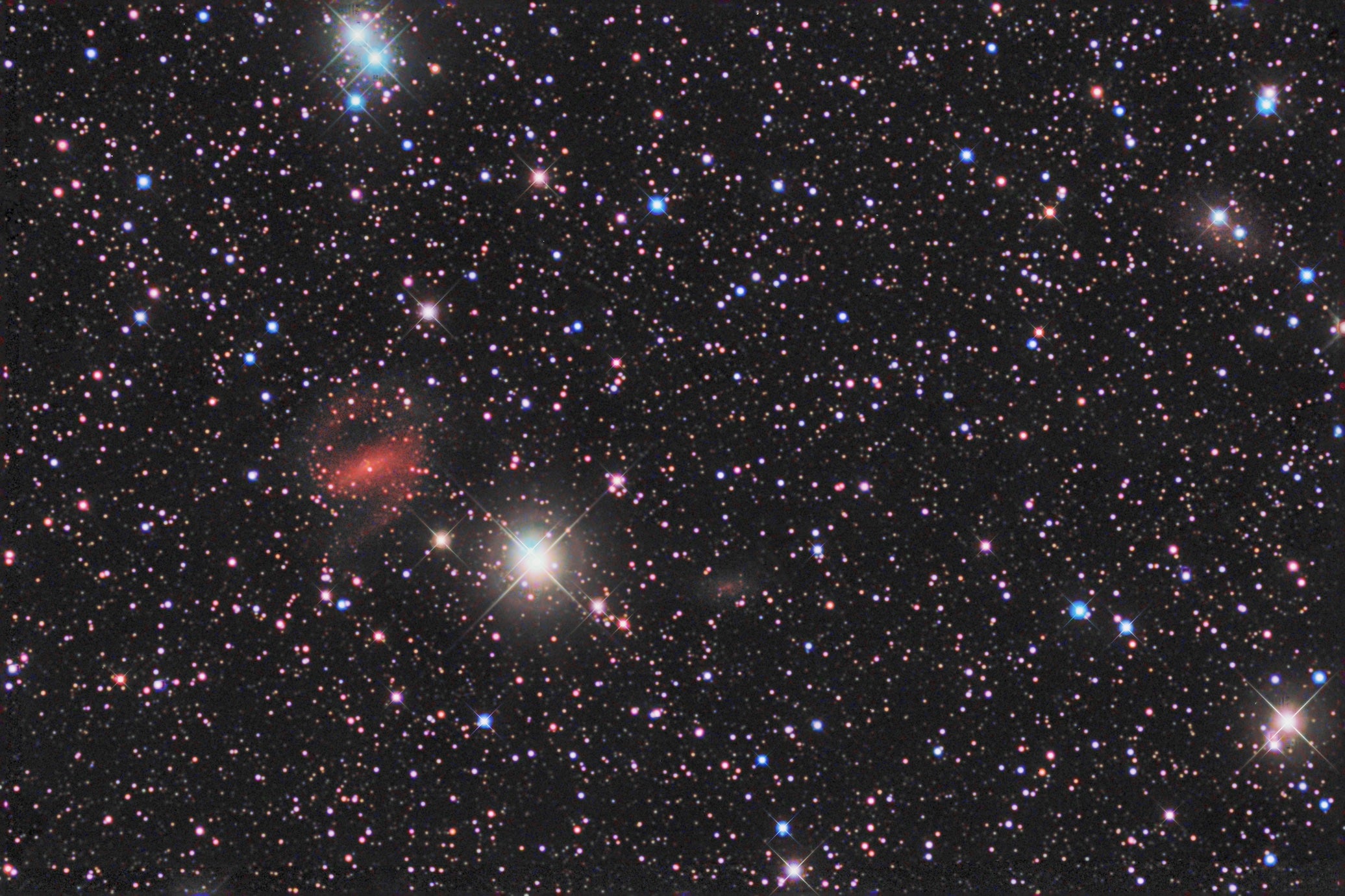
Like Maffei 1 and 2, Dwingeloo 1 is located in the constellation Cassiopeia, obscured from direct view by opaque clouds of dust within the Milky Way’s zone of avoidance. It was first spotted in 1994 by the Dwingeloo Obscured Galaxy Survey using the 82-foot (25 meters) dish at Dwingeloo Radio Observatory in the Netherlands.
Thanks to infrared techniques that can pierce dust clouds, Dwingeloo 1 is now recognized as a member of the nearby IC 342-Maffei 1 Group. Like the other galaxies in the collection, Dwingeloo 1 is estimated to be about 10 million light-years away. It is thought to contain more than 100 billion stars — making it about the same size and mass as the Triangulum Spiral (M33). Infrared images clearly show that Dwingeloo 1 has two spiral arms curving away from the ends of a central bar — with at least 15 HII emission regions in both arms.
Dwingeloo 1 is accompanied by two smaller satellite galaxies. The first, known as Dwingeloo 2, is an irregular galaxy discovered in 1996. Dwingeloo 2’s irregular structure is likely due to gravitational interplay with the more massive Dwingeloo 1. The second satellite galaxy, known as MB 3, was discovered by the team of Marshall McCall and Ronald Buta in 1996 using the Burrell Schmidt Telescope at Kitt Peak Observatory. MB 3 is a dwarf spheroidal galaxy characterized by a highly flattened disk.









